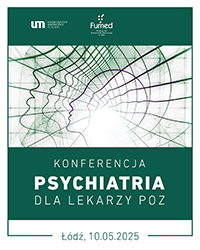An assessment of short- and long-term efficacy of local corticosteroid injection in patients with lateral epicondylitis
Piotr Geisler1,2, Bartłomiej Kisiel3, Artur Bachta2, Sylwia Elert-Kopeć1, Weronika Pasińska1, Witold Tłustochowicz1
 Affiliation and address for correspondence
Affiliation and address for correspondenceAim of the study: An assessment of short- and long-term efficacy of local corticosteroid injection in patients with lateral epicondylitis (tennis elbow) based on The Disabilities of the Aim, Shoulder and Hand (DASH) questionnaire and Visual Analogue Scale (VAS), as well as an assessment of long-term treatment efficacy depending on baseline ultrasound disease activity. Materials and methods: A total of 32 patients presenting with tennis elbow and increased blood flow on ultrasound who were treated with local corticosteroid injection were included in the study. Baseline increase in blood flow, pain severity, upper limb function and the subjective response to treatment at 2 weeks (short-term outcomes) and 6 months (long-term outcomes) were assessed. Results: Short-term improvement was achieved in all patients. Long-term improvement was observed in 24 (75%) patients with lower baseline DASH and VAS. Long-term improvement was achieved in 15 (94%) patients in the group with low to moderate baseline disease activity on power Doppler ultrasound (16 patients) and in only 9 (54%) patients in the group with high baseline Doppler disease activity (16 patients). Conclusions: Local corticosteroid injection in patients with tennis elbow who present with increased baseline vascularity on ultrasound seems show short-term efficacy. Negative long-term prognostic factors seem to include significantly increased baseline vascularisation and high baseline DASH and VAS scores. Therefore, it seems reasonable to evaluate these factors before treatment onset, and if abnormalities are found, intensification of treatment or switch to another therapeutic option should be considered.











